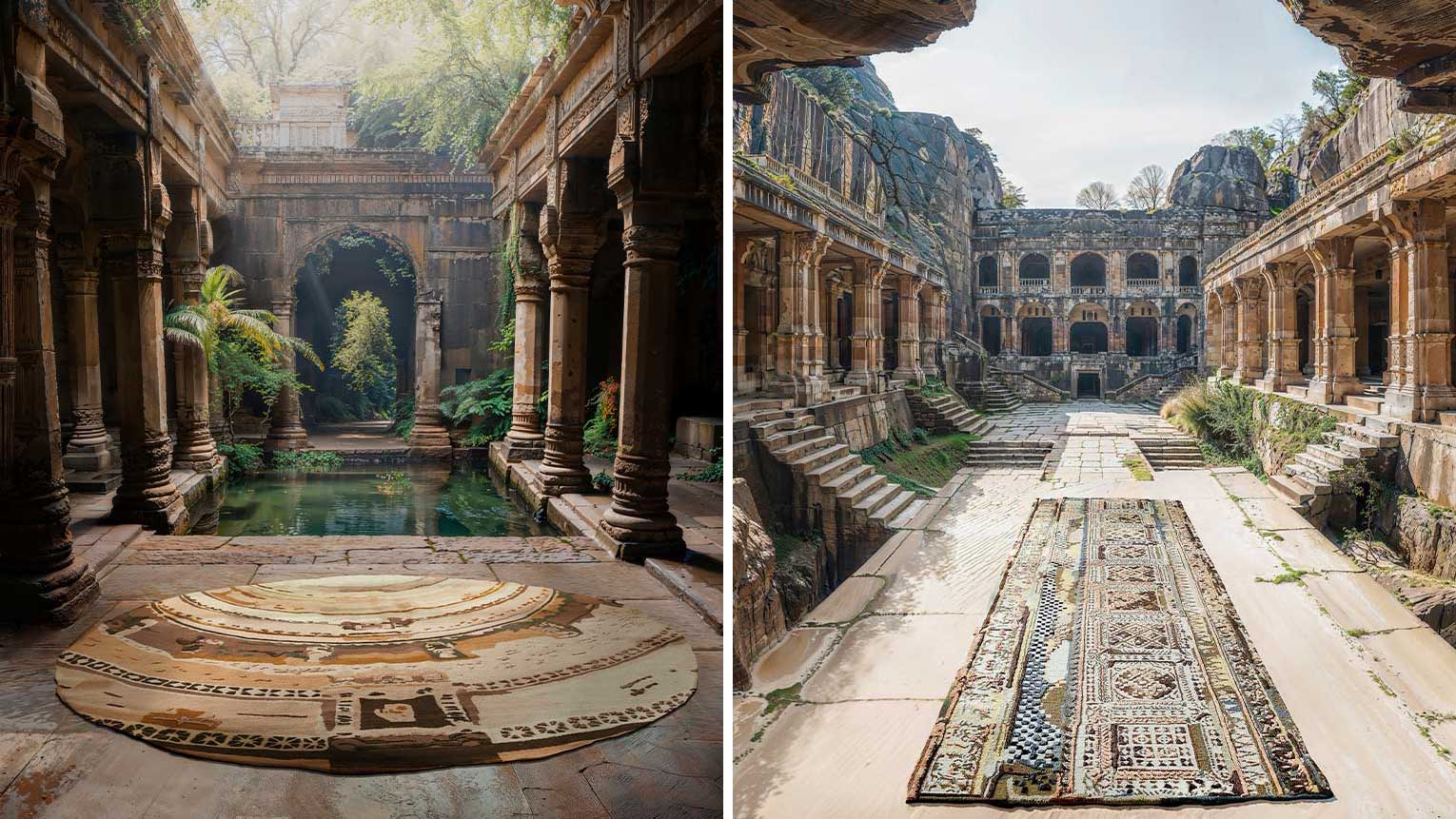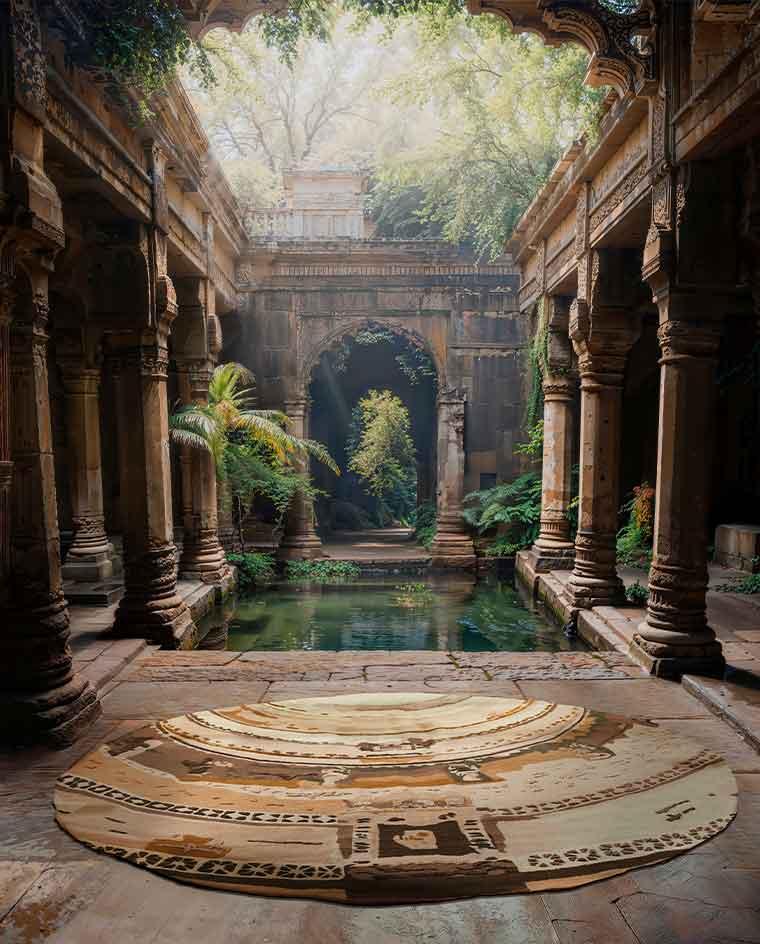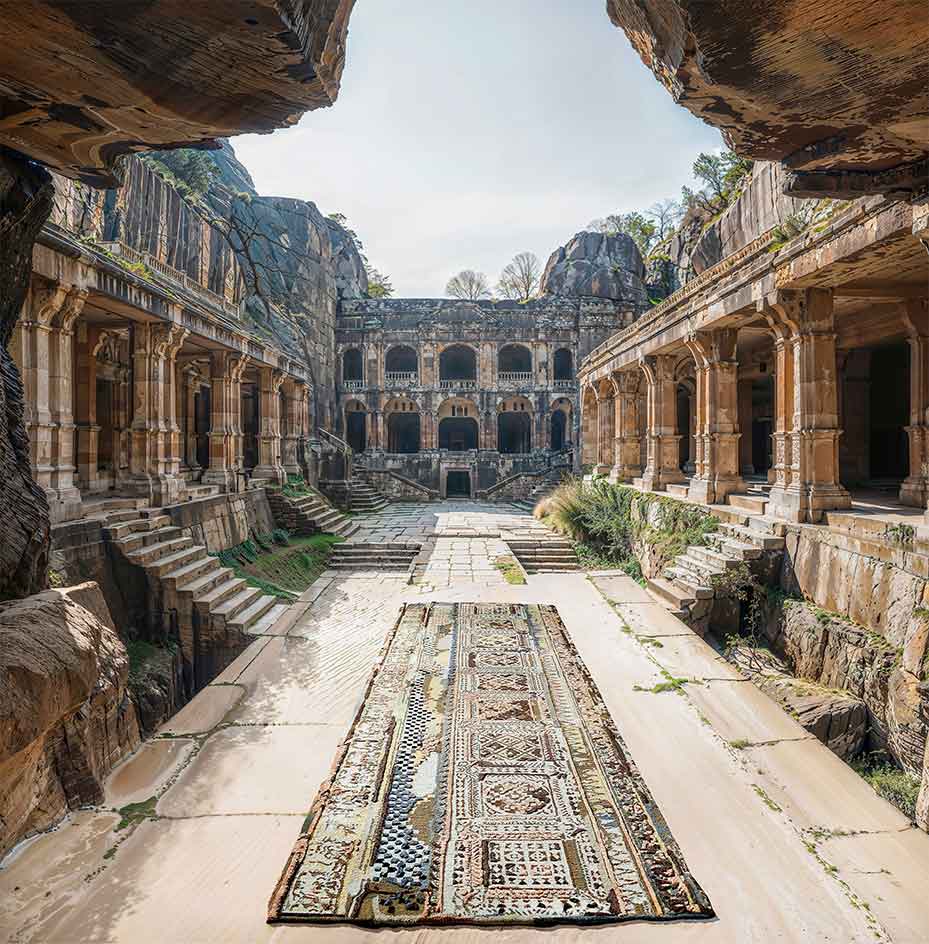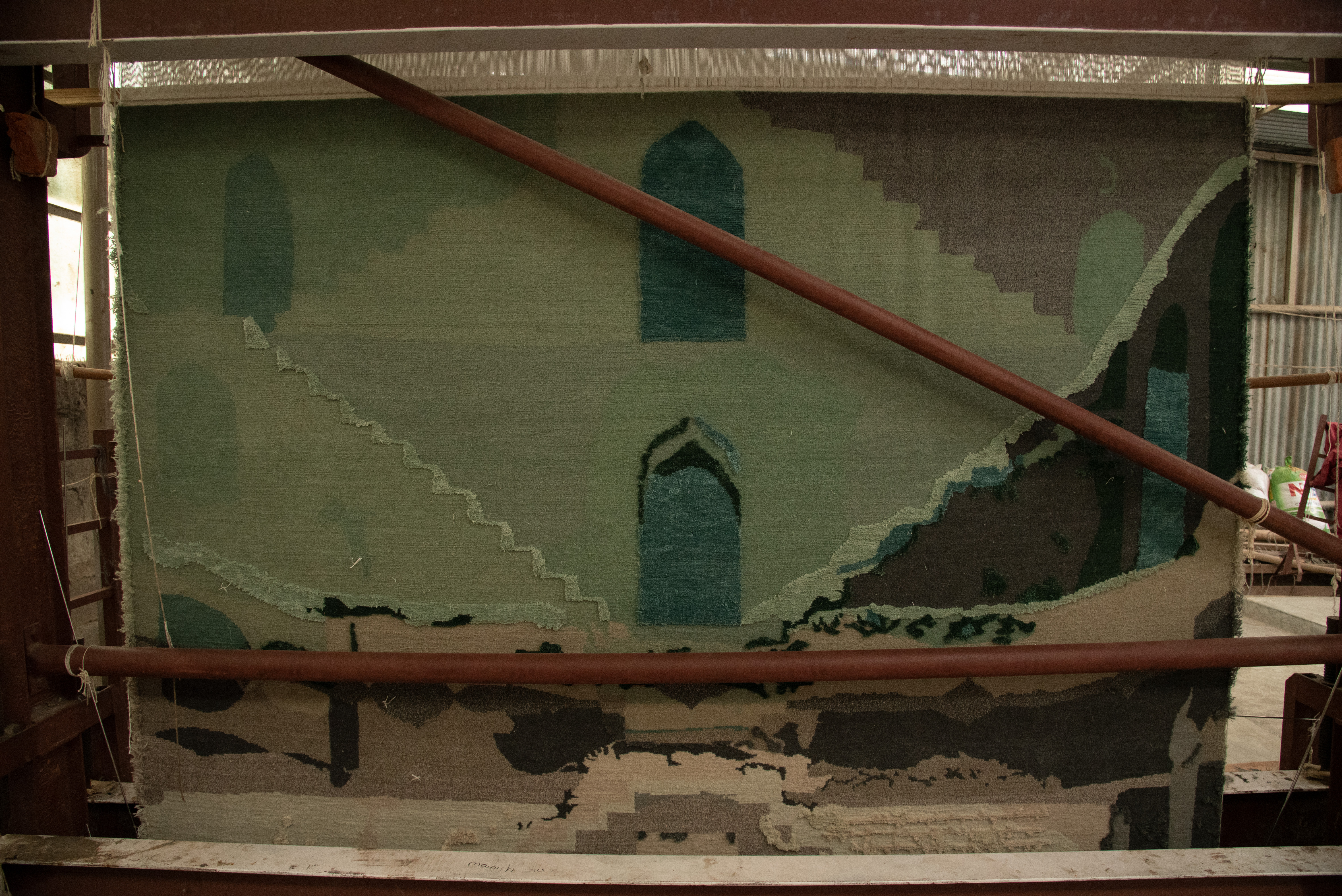
Every ancient civilisation has made architectural contributions to the world, and alongside the Egyptian pyramids, Greek columns, and China’s great wall, one of India’s most significant are the stepwells. These unique and intricate structures once numbered in their thousands across India, and have now provided the inspiration for a new collection of rugs designed by Shalini Misra (whose interior design prowess we’ve previously explored in a London family home) and produced by Cc-tapis (a brand among our Best Surrealist Design winners in the Wallpaper* Design Awards 2024).
Designed to allow access to water via a series of cascading terraces – so that it was within reach no matter how high or low the level – the stepwells turned the simple act of fetching water into a vibrant public show. They were lavishly ornamented, with niches and pavilions where people could swim, bathe, perform religious rituals, and enjoy the natural cooling effect of the stored body of water. Today, stepwells can be found scattered across India, some abandoned, some still in use.
Stepwells Collection by Shalini Misra for Cc-tapis

The Stepwells collection is the first exclusive product that Misra has designed for Curio, her proprietary digital platform offering a curated edit of handmade furniture, lighting, accessories and art sourced from around the world. The London-based designer established her interior design studio in 2000, and now operates from offices in New York, Dubai and Delhi.
It was her own Indian heritage, her experience with the country’s craftsmanship and commitment to wellness in her design that drew her to the stepwells as a source of inspiration. In India, as in many cultures, water is considered a purifying, renewing and sacred element.
These rugs are not just beautiful pieces of art but also a reminder of the importance of sustainability and community, Misra explains. 'We wanted to create pieces that would reflect the functional, spiritual, social and aesthetic properties of the stepwells, that would not only showcase extraordinary craftsmanship, but that would be really rooted in a sense of place too. As an architect by training, I have always been inspired by the incredible functionality and intricate aesthetic of India’s stepwells.'
Each of the three statement rugs features traditional references and a locally inspired colour palette, and is named after the specific stepwell that inspired its design. ‘Ujaja Bioli’ is a large rectangular rug, ‘Adalaj ni Vav’ is a circular rug, and ‘Rani Ki Vav’ is a runner rug (stepwells are also known as baolis and vav).

In Cc-tapis, Misra finds a perfect producer for the Stepwells collection. The Italian rug maker is renowned for its beautifully crafted and sustainable designs as well as its growing series of creative collaborations. Founder Fabrizio Cantoni describes how each piece takes 14 to 17 weeks to complete, and the company prioritises sustainability through the use of ethically sourced materials and eco-friendly production practices.
'Our artisans pour everything into each rug,' he says. 'Pieces can include up to 232,000 individual knots per square metre. The finishing processes, including hand-cutting and embossing, contribute to the exceptional quality. The hand-knotting technique is at the core of our production process, a method common in the Middle East, India, and China.' From refining raw materials to dying processes, every stage is managed in-house.

The images of Indian stepwells are translated onto the rugs by weaving exceptionally delicate gradients of hand-dyed Himalayan wool. To evoke a surreal and sculptural effect, Cc-tapis’ Nepalese artisans integrate different pile heights, textures and an original combination of colours to define the varying levels of stepwells and elaborate carvings – thoughtful craftsmanship at its finest.
Reducing the geometry of the stepwells to a more two-dimensional form in the rugs doesn’t compromise their power to bring people together, says Misra. 'Like the stepwells, rugs, as functional and textural foundations, have a unifying power, and this is something we wanted to highlight.' They act as grounding elements for both entertaining and everyday living, she says. 'Historically, the stepwells would act as the heart of community, a safe haven – in particular for women, offering protection and shelter from the overpowering heat as they fetched water for the community.'
Though India’s stepwells are disappearing and many have been left deserted due to modernisation, governmental and heritage organisations are working to conserve the architectural phenomenon.







